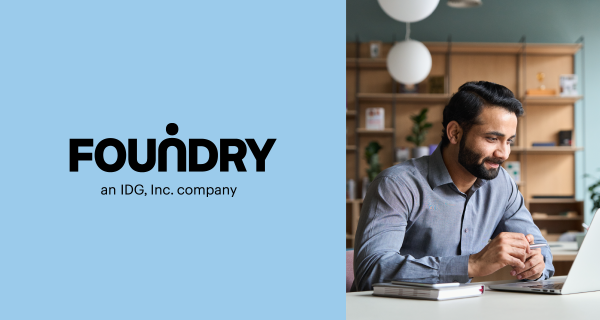The research also found that 87% of tech marketers said alignment with their sales team is strong, which is up from 76% last year.
Boston, MA – September 28th— Foundry (an IDG, Inc. company) released its third annual 2023 ABM and Intent Benchmarking Study today, which dives into the uses, goals, and challenges of account-based marketing, as well as how intent data is used to fuel ABM programs and the success and challenges tech marketers see with intent.
Account-based marketing has taken the B2B marketing world by storm, and the enthusiasm shows no signs of slowing down. In fact, this year’s research found that 96% of tech marketers have a documented ABM strategy and 93% feel that their ABM efforts have been extremely or very successful, which is up from 84% when the study was conducted last year.
Here is a closer look at some of the findings from this year’s study:
Tactics and tools supporting ABM
The landscape for account-based marketing expansion looks promising, as an overwhelming 95% of marketers anticipate that their ABM budgets will increase in the next 12 months. This is a notable uptick from previous years – 90% expected an increase in 2022 and 84% in 2021.
Respondents to the survey are using a variety of ABM tactics to support their marketing objectives. These tactics include sales activation/account analytics (cited by 53% of respondents), target-account lead generation (50%), account-based advertising (48%), and content syndication, IP address intelligence, and personalization, all of which are equally cited at 47%.
Marketers are also leveraging a mix of tools and channels to support their ABM efforts. Customer marketing (43%) and paid social (40%) are the most widely used resources, followed by content syndication (32%), organic social (28%), and SEO (26%). When it comes to measuring the success of ABM initiatives, marketers use a diverse range of metrics. The top three include customer satisfaction scores (cited by 48%), site visits from target accounts (43%), and revenue generated (40%).
Intent data is fueling ABM efforts
Another key component of Foundry’s study is the use of intent data with ABM marketers. The research shows that 91% are using intent data/scoring to prioritize their accounts and to identify what content should be served within ABM campaigns.
Intent data also plays a key role in identifying target account lists, a practice used by yet another 91% of marketers. Marketers have also extended their use of intent data and are increasing the number of sources they are using, cited by 92%.
When it comes to the primary goals of using intent data, marketers are focused on optimizing lead scoring models (cited by 47% of respondents), followed by building audience segments for ad campaigns (43%), identifying new accounts (43%), generating higher quality leads (42%), and monitoring potential customer churn (42%).
The goal of any ABM campaign is to generate qualified leads and the survey results indicate a strong correlation between the number of data sources used and lead gen success. About 48% of all marketers said between 11% and 50% of the leads generated from their marketing campaigns become sales-accepted leads and 47% said 51% and 80% are sales-accepted.
The challenges ABM marketers face
Success isn’t always the case when it comes to marketers and their ABM programs. Only 1% said they don’t experience any challenges with ABM, and the top reported challenges are measuring the success of their programs (35%), attributing the success of the different ABM tactics and channels (34%), and their tech stack being overly complicated (29%).
The same sentiment goes for intent. Marketers need help with intent data, specifically with getting their sales teams to trust the intent data quality (49%), measuring the impact of intent data on pipeline (48%), and combining intent from multiple data sources (47%).
Ninety-two percent of marketers also cited that it’s important that they know the exact sources of intent data when working with a provider. Just over half of respondents listed criteria for when they chose a data provider, such as: vendor reviews/analyst evaluations (rated as very or somewhat important by 97%), sample data that can be independently validated (97%), and peer recommendations (95%).
“This research indicates that even as ABM and intent have become mainstream in B2B, marketers are now, more than ever, focused towards measuring the impact of both ABM campaigns and intent data,” said Tukan Das, Vice President and Product Manager, Foundry.
For more information and to see the full results from the ABM & Intent Benchmarking study, please view the white paper.
About the 2023 ABM & Intent Benchmarking Study
The 2023 Foundry Account-Based Marketing (ABM) and Intent Benchmarking Study was conducted via online questionnaire in August of 2023. 500 total respondents with marketing titles were collected from NA (60%), EMEA (20%) and APAC (20%) regions. 40% of respondents are from the manufacturing (computer-related) industry, 27% are from high tech, and 12% from software/computer services. Others include e-commerce, independent software vendors, telecom carriers, and cloud & DC service providers. Foundry conducted the study to understand the workings of ABM and its evolution and adoption compared to traditional marketing approaches.
About Foundry, an IDG Inc. Company
Foundry helps companies bring their visions to reality through a combination of media, marketing technologies, and proprietary data on a global scale. Our intent data and martech platforms are powered by data from an owned and operated ecosystem of global editorial brands, awards, and events, all engineered and integrated to drive marketing campaigns for technology companies. Foundry is dedicated to generating and innovating with data, driving demand for technology marketers with 38 offices in global markets. Foundry is a wholly owned subsidiary of International Data Group, Inc. (IDG), the world’s leading tech media, data, research, and marketing services company. To learn more about Foundry, visit foundryco.com.





